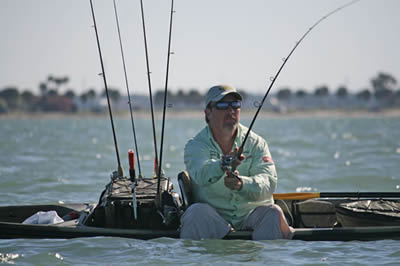Neil Taylor, Strike Three Kayak Fishing
Having been in on the kayak fishing business for twelve years now my observations and ideas create a blueprint for anyone trying to set up a viable fishing program. This can be a lucrative situation for the person who wants to do it the right way.
For the past seven to ten years, the most rapidly growing segment of the fishing industry is in the “paddle” realm, with kayaks as the vessel of choice for the fishing folks. The casual observer has noticed these watercraft passing them on the streets, strapped down to the roof of vehicles much more often than in the past. Why the surge and growth in interest in kayak fishing? One is base economics. Kayaks are the no-maintenance, low-cost option for fishing fresh or inshore waters. There are options for “offshore” fishing kayaks as well. It is a one-time investment in the kayak, a craft with long lasting durability “and more.”
Aside from the economics the next question is: Is this for me? The “and more” has everything to do with kayak manufacturers efforts to build kayaks that have added stability and noteworthy comfort. The “tippy” kayaks are an item of the past. “I’ll fall out”, is an issue from the past (See Myths About Kayaks, http://www.capmel.com/myths-about-fishing-kayaks/ ). The wide beam and overall design minimizes the chances of flipping over and keeps you (and your gear) out of the water. People hear the word kayak and an image comes to mind. Enclosed, wobbly and uncomfortable that mental image of the “kayak” is simply not the reality any longer. In all kayaks, but in particular with the fishing kayaks the boats are designed for stability and comfort.
The comfort factor is another aspect built into today’s fishing kayak. Sitting in a kayak now versus a decade ago translates to “unlikely” for an appointment with your physical therapist. Take the Native watercraft line of boats: The first-class seat in the Ultimate, Versa Board (option), Slayer and Mariner is matched by no one else in the industry. Ideal seat-back height and ergonomic support throughout means that the seat itself is perfect for everyone, even those with “back problems”. The rest of the layout: Open, not enclosed and plenty of “shift around” room for comfort during periods of extensive “in boat” time. All other companies had to improve their seats to match the comfort found in a Native brand watercraft.

The Fishing
There are distinct advantages for using kayaks: Access to shallow waters unreachable by a power boat, the “low profile” in approaching fish and the “stealth factor.” There is no quieter way to approach skittish gamefish than the fishing kayak. Kayak anglers get much closer to the fish without spooking them because their craft quietly glides into range and is just above water level. Only “user error” would alert the fish to the presence of the stealthy angler. Take a look around: The kayak anglers are connecting with incredible fish because of this obvious advantage.
The Convenience Factor
Launch locations are abundant for kayakers at a time when boat ramps and other access points for conventional boats are disappearing. Public locations with access to the water is a usable launch point. Included in the convenience factor, “setup and breakdown time”. Kayak anglers are noted for fishing more often than other fishermen. One can get out for a short period of time, and doesn’t have the extensive maintenance work on their kayaks before or after the outing, than the other boat users. There is nothing to do when a trip is over. I don’t even hose mine down.
The basics of a properly equipped kayak are: The anchor trolley system, a paddle clip or leash, rod holders, a life vest and a whistle. The trolley is important for positioning the boat by having the anchor coming off various angles of the kayak. The paddle clip or leash allows you to stow the paddle during “fishing time” and prevents the loss of that vital piece of equipment. The vest and whistle are required safety equipment for the kayak.
Multiple rod holders allow for a selection of fishing rods equipped with lures for different situations, eliminating wasted time changing lures. The “crate” can contain all the extras that could possibly be needed during the duration of a fishing trip. An ideal organizer, this too leads to more time fishing and all the tools-of-the-trade needed for safety and success.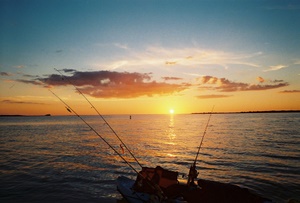
If you’re thinking about a kayak for fishing, give it a try. With everything I use for kayak fishing charters, it’s for a specific reason. Are you trying to grow the interest in kayak fishing in your area?
Feel free to contact me with any questions about kayak fishing or anything else I can help you with! I do hope to hear that my input leads to a lot more sales in your stores.
What should you sell?
These the “essentials” –
- The kayak/watercraft
- Roof Rack and rack pads
- Paddle, PFD, whistle, rod holders, anchor trolley rigging, dry bags
Other items that you could consider as well if you wanted to be a store that caters “full service” to the kayak angler:
- Fishing rods, reels, lures, line
- Accessories Waders, hats, lights, shoes, leader line, flares, Night fishing accessories, sunglasses, cameras
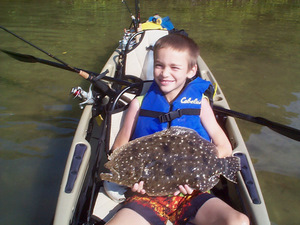
Having a guide or “expert” affiliated with your store:
As someone who has achieved a visible stature in the fishing scene, there are many people I never meet who go out and buy the things I talk about. See “Product Reviews.” This is another reason to find a very good person who is either a guide or an avid kayak angler in your area. Your kayak fishing expert should take you and your employees out to give everyone the experience. Everyone gets a fun day on the water but they also now have the insight to “sell” the sport to potential customers and also make recommendations on the “rigging”, safety and what I call “fishing from a seated position.”
I do a lot to promote my kayak fishing charters. You want someone who has a “voice” in the community. I do the biggest feature seminars, monthly seminars (which is mentioned in my “email reports” and the Times), write for several magazines and the Tampa Bay Times, attend the various fishing shows doing on-stage seminars about kayak fishing.

I hold monthly seminars called Kayak Fishing School. About twice a year I’ll have the topic be “Are you interested in fishing from a kayak?” It is well publicized and always well attended. I’ll talk about the advantages of fishing from a kayak and give a summary of the sport in about an hour and a half. Odds are high that six of the seven will buy boats right there from the store and many will get their friends to also join in on the fun. There will be some of those people who hire me to give them the “hands on” training. In addition to the fishing aspects, people who attend these seminars are also going to have the instruction on how to handle the emergencies that can arise while on the water and how to avoid bad situations during their outings. I’ll get feedback on how my instruction saved someone from getting into serious trouble out there. This is something you want your “expert” to work in to their seminar itinerary.
Using a kayak to enjoy the water and to pursue fish is one of the most pleasant ways to spend your time. People are a little timid when they start to think about it. That anxiety can be relieved in a number of ways.
Hire a guide- Get a comprehensive course in paddling, rigging, casting, using lures effectively and the small things you wouldn’t think of on your own. One such example is tips on fighting a fish from a seated position. Many do-it-yourself folks end up spending more money on servicing their rods and reels than they would have spent learning the right way from day 1. Another example are the tips you get on “approaching” the fish and the “setup” for fishing an area
Safety:
Prerequisites, life vest, signal (whistle, mirror, flashlight, horn), First Aid (neosporin, bandages, peroxide, an Epipen),
Lights: Flashlights, headlamps; Jacket.
Separation from your paddle
Weather: Enlist a “weather watcher” and have a “plan” on where you will go if you get cut off from your launch location by an approaching storm.
Other considerations to teach your clients:
Wind forecast
Tides
Still not sure if kayak fishing is for you? What other reasons should you get a kayak for fishing?
The Aforementioned “rigging”
1) The bare basics: Lures, boat rigging and “hot” accessories. You can easily “kit” the things to stock, train your salespeople and almost Cookie Cutter your sales to the kayak buyer who is using the boat for fishing. A tackle section can be set up the same way. If you have local lure suppliers who will be perfect for this, that’s great. Otherwise I am affiliated with 12 Fathom Lures/Producto. That’s salt and fresh water lures. I’m not here to sell lures. I offer this as an option for you to consider. Contact me if you’d like to put up a tackle section for your store and I can consult with you on what would be good inventory for your tackle section.
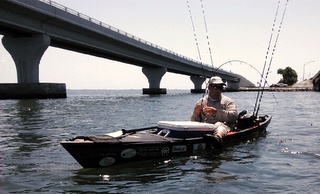
A notable example of why you need to have your “expert” take you out kayak fishing is the anchor trolley system. Aside from the rod holder, this is the most important feature someone will add to a fishing kayak. Tampa Bay article on anchor trolleys: http://www.capmel.com/the-anchor-trolley-st-pete-times/ The bottom line, you will create those lifelong customers if you get them to rig their boat in the most efficient manner so that they enjoy the kayak fishing experience to the highest extent. The anchor trolley makes comfortable fishing a breeze if the user is taught the functionality.
2) Guide services and advice. Guides in other areas have talked to me about building their own businesses. I’ve given them the ideas that have worked for me and see them emulating what I do. I tout the advantages of the Native watercraft and sell the sport as a whole (“making the best experience”, trip planning/tides/weather/winds, catching more fish; involving spouses and kids etc). Your customers who visit the store who are not having the best fishing results should be handed your guide’s business card and told all the benefits they will garner from the hands-on instruction and evaluation of their technique. You can come to as many of my seminars as you want but I won’t really make huge improvements until I have you out there with a rod in your hands.
The “Experience” and creating “customers for life”
Many of my clients get such good care at the store, they do all their shopping there. They decide on getting a new or “extra” boat, they head to the store. They have someone else who is interested in joining them fishing, they bring that person to the store. Create your own “customers for life” and harvest all that repeat business. ASK for email addresses and send out newsletters with store announcements, other events you may be putting together, seminars on fishing etc. People react to this form of contact: With my own email database, I get a lot of repeat business from the regular articles and reports I send out.
Things to have the customer ask themselves: Can I store it? Can I carry it myself? Can I transport it easily?
There are tricks and tips for everything involved in this. Lifting and transportation are more important than people initially realize. If you can’t lift your boat, you won’t want to go out. Want to avoid lifting? Find an old piece of carpet. Lay it on the back of your vehicle and slide the kayak up and down. No lifting, no damage to the car.
Neil Taylor charters kayak fishing trips (www.strikethreekayakfishing.com) and can be reached at (727) 692-6345 or livelybaits@aol.com
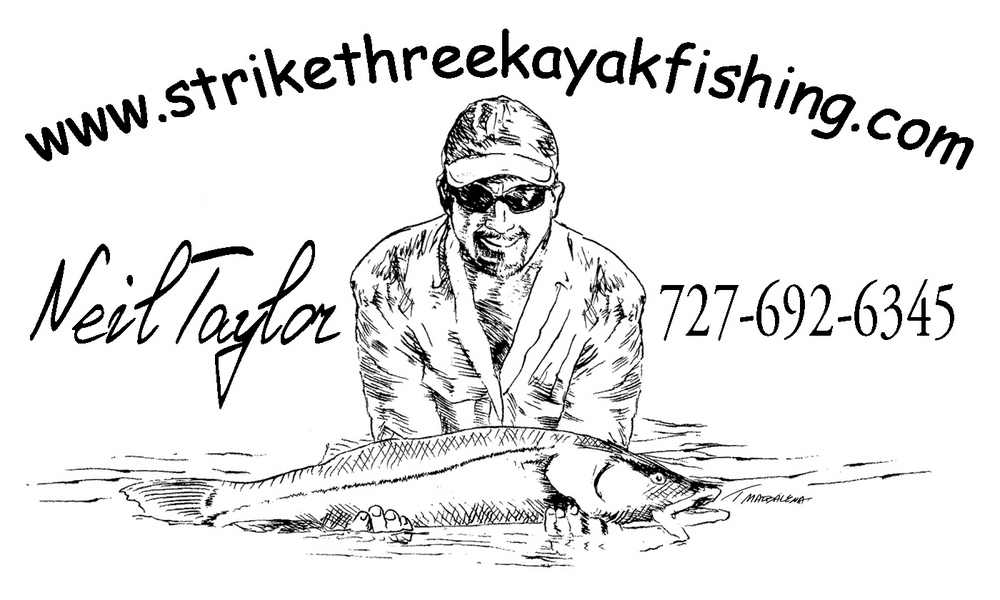
- The Neil Blog - March 23, 2024
- ++++++++++++++++++++++++++++++++++++++++++++++++++++++++++++++++++++++++++++++++++++++++++++++++++++++++++++++++++++++++++++++++++++++++++++++++++++++++++++++++++++++++++++++++++++++++++++++++++++++++++++++++++++++++++++++++++++++++++++++++++++++++++++++++++++++++++++++++++++++++++++++++++++++++++++++++ - June 25, 2023
- Nature Coast:William Toney - December 12, 2021
